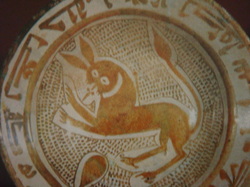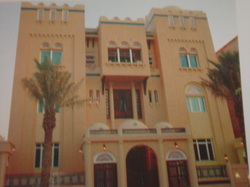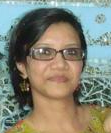Another place worth visit in Kuwait is the Tareq Rajab Museum which is a private museum located in a villa in Block12 of Jabriya. This museum is the brain child of Tareq Sayed Rajab and his wife Jehan Wellborne.
Tareq Sayed Rajab was the first Kuwaiti to be sent abroad to study art and archaeology. While a student in the United Kingdom, he met his future wife Jehan Wellborne and after completing his studies married her in the year 1955. Since then they had a plan of constructing their own museum. This is how the idea of constructing the Tareq Rajab Museum came to existence and presently the museum displays around ten thousand collected items. Jehan Wellborne was passionate about researching on the lifestyle and culture of different types of people and their culture. She was also interested in the folklore and other traditional subjects. After getting married to Tareq Sayed, she worked on all these things and the collection of the items in the museum are the memories of her works.
Tareq Sayed Rajab was the first Kuwaiti to be sent abroad to study art and archaeology. While a student in the United Kingdom, he met his future wife Jehan Wellborne and after completing his studies married her in the year 1955. Since then they had a plan of constructing their own museum. This is how the idea of constructing the Tareq Rajab Museum came to existence and presently the museum displays around ten thousand collected items. Jehan Wellborne was passionate about researching on the lifestyle and culture of different types of people and their culture. She was also interested in the folklore and other traditional subjects. After getting married to Tareq Sayed, she worked on all these things and the collection of the items in the museum are the memories of her works.
The Department of Antiquities and Museums in Kuwait selected Mr. Tareq Sayed Rajab as its Director. He was the first Director of the department but left the post after few years (1969) and joined his wife in her work. He together with his wife opened the New English School for Kuwaiti and foreign children. By then they were already involved in collecting material for a future museum of their own. They travelled all over the Islamic world and beyond to Central and South-East Asia and the Far East collecting artefacts and photographing monuments, people; their customs and everything they believed could be used and exhibited in a museum. As a result of their hard work and research, they were able to open the Museum to the public in 1980.

The Tareq Rajab Museum in Kuwait represents the valuable effort and work through the precious collections. Thus now the Tareq Rajab Museum has a collection of over thirty thousand items, of which about ten thousand are permanently on for public display. A large collection of ethnic and Islamic gold and silver jewellery, manuscripts, metalwork’s, textiles, embroideries, costumes, ceramics and musical instruments can be viewed that are pleasingly displayed . You will find gold and silver jewelleries from China, Malaysia, Indonesia, Eastern Europe, Tibet, Nepal, India, Yemen, Greece, Egypt, Portugal, Thailand and UK. The second room consists of brass jewellery from Sri Lanka (Ceylon), India (Kashmir, Mysore and Nagaland), Egypt, Syria, Iran, Tunisia, Morocco, Iraq, S. Africa, Oman, Saudi, Yemen, Uzbekistan and special Kundan jewellery of India. Musical instruments from India and Arab countries and dresses from Syria, Palestine, Jordan are nicely laid out in different rooms. In another room, you will find Middle Eastern gold jewellery from the 2nd-3rd AD; in another you will find firearms of the Islamic world and in another jewellery of the Mughal period, where a Jaipur enamel work of 18th century, set in with diamonds, rubies, emeralds and pearls is the main attraction. In the Gold Room the displays go as far back as the pre Islamic period and are mainly from the Middle East although there is a section on non Islamic, Roman and Byzantine that shows the links with the Islamic Ornaments. An example of a very important piece in the Gold Room is a large gold necklace with Qur’anic inscriptions. The family, to whom it originally belonged to, maintained that it was a presented to their ancestors by the Sultan of Zanzibar and Oman for services rendered. A photograph hanging next to the piece in the museum shows Princess Salme wearing what appears to be an identical necklace to the one in the Museum. Another very fine piece is a Fatmid pendent from Egypt, dating around the 10th / 11th Century. The necklace itself was possibly served as a container for a small Quran or a text of prophylactic character.

The things used by Turkomans are also displayed. Turkomans who now mainly live mainly in USSR, Iran and Afghanistan are the descendants of the Central Asian tribes who invaded the regions east of the Caspian Sea. Silk dresses and jewellery from Afghanistan and Uzbekistan is displayed in another room; another space is dedicated to the shawls from Kashmir and Hyderabad. In the next room, you will find dresses and jewelleries from Turkey, Egypt, S. Arabia, Sudan and India.

Relatively in a bigger room you will find the first hand written smallest Quran in the world. In the same room, you will incense burner (12th century), Shields (19th century), Glassware from 8th- 13th century, Bowls of 11th and 12th century, Lampshades of 12th and 13th century, Perfume stands of different shapes and sizes from 7th to 10th century. Also pottery of the Fatimad period, from Egypt and Syria (9th and 10th century), Persian “Minali” of 12th and 13th century and gold luster Kashan from 12th -13th century are part of the collection of the museum. There are lots of coins especially gold coins of 188AD, 803AD, 805 AD, and gold coins and dinars from 697AD to 749AD in display. Mughal miniature paintings from mid 19th century are another attraction of the museum. Early Islamic manuscripts are also in display. Arabic manuscript on gazelle skin, written for Muzaffa Al Sin Shah Qajar, who reigned from 1896 to 1907 are in display.

There is a reference library also in the Tareq Rajab Museum in Kuwait. This library can be regarded as a 'goldmine of information' for the benefit of those who want to learn about the culture and heritage of the Islamic and the Arab world.
During the Iraqi invasion in 1990, most of the belongings of the one side of the museum was packed away in boxes and then locked off in a safe place. Since all the belongings could not be packed away therefore the side where exhibits were still present was blocked off from the place where the boxes containing exhibits was kept. The reference library was used as a bomb shelter during the aerial warfare. The Museum was reopened in September 1991.
During the Iraqi invasion in 1990, most of the belongings of the one side of the museum was packed away in boxes and then locked off in a safe place. Since all the belongings could not be packed away therefore the side where exhibits were still present was blocked off from the place where the boxes containing exhibits was kept. The reference library was used as a bomb shelter during the aerial warfare. The Museum was reopened in September 1991.

The museum is one of the first places I visited after arriving in Kuwait. After that when my parents, in-laws and then my brother came we took them to the museum. But last time when we visited the museum i.e. when we took my brother in April 2010, I was terribly upset as they had put an entrance fee of 2KD per person. Before that entrance to the museum was free.
Address -Tareq Rajab Museum
Block 12, Street 5
House 22 , Jabriya Area
Kuwait City, Kuwait
phone: +965 531 7358
fax: +965 533 9063
The museum is open daily
The visiting hours are as follows:
Morning 9-12pm
Afternoon 4-7pm
Friday 9-12pm
After our visit to Tareq Rajab Museum, we hurriedly drove to the Tareq Rajab Museum of Islamic Calligraphy as they too close at 7pm and we did not have much time at hand. The visiting hours of the Calligraphy Museum is same as that the Tareq Rajab Museum and is on the same street as the Dar al Cid, where many art exhibits are held, also under the patronage of the Tareq Rajab family. This museum is probably the largest collection of Islamic Calligraphy works of art which ranges from 7th century to the present day.
Address -Tareq Rajab Museum
Block 12, Street 5
House 22 , Jabriya Area
Kuwait City, Kuwait
phone: +965 531 7358
fax: +965 533 9063
The museum is open daily
The visiting hours are as follows:
Morning 9-12pm
Afternoon 4-7pm
Friday 9-12pm
After our visit to Tareq Rajab Museum, we hurriedly drove to the Tareq Rajab Museum of Islamic Calligraphy as they too close at 7pm and we did not have much time at hand. The visiting hours of the Calligraphy Museum is same as that the Tareq Rajab Museum and is on the same street as the Dar al Cid, where many art exhibits are held, also under the patronage of the Tareq Rajab family. This museum is probably the largest collection of Islamic Calligraphy works of art which ranges from 7th century to the present day.

The museum is impressive and well organized. It has a beautiful collection of calligraphic art and artifacts. But we found that most of the exhibits had no explanations so we didn’t know the significance of what we were seeing that were so impressive. The calligraphy is manifest in hangings, ancient Qurans, quilting, posters and carved wood. Each item is a work of art. The Islamic Arabic Chinese calligraphy is probably one of the most interesting collections at the museum. Chinese calligraphy on its own is fabulous and stunning but seeing it done in Arabic lettering was totally new.
But hope to find explanation on all the exhibits when I visit it next time.
I think if you are in Kuwait you must visit BOTH the museums.
But hope to find explanation on all the exhibits when I visit it next time.
I think if you are in Kuwait you must visit BOTH the museums.




 RSS Feed
RSS Feed
